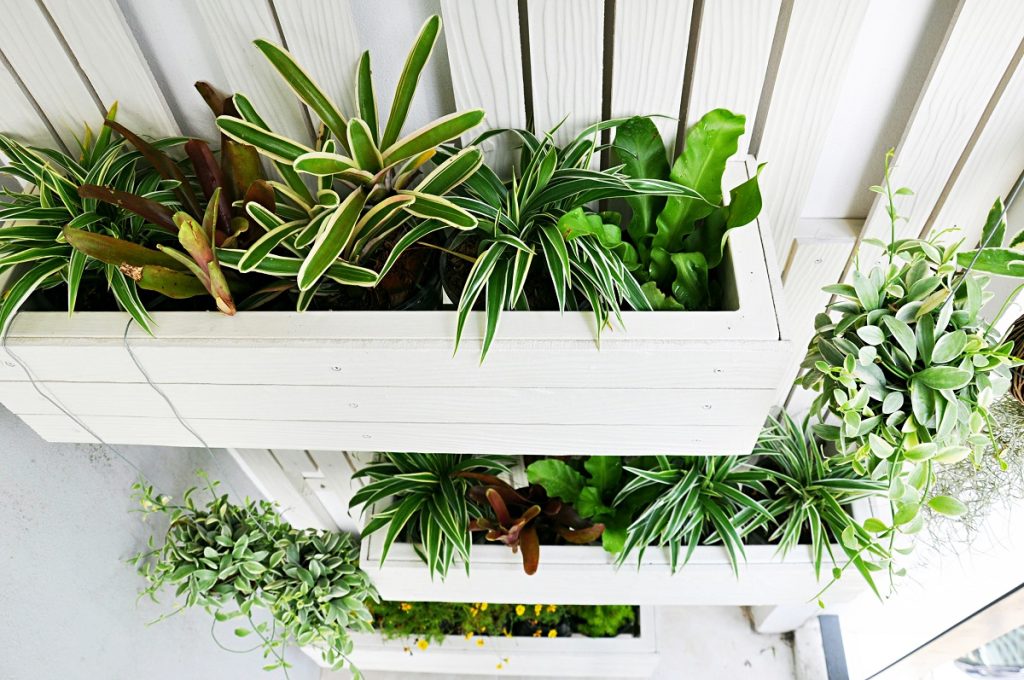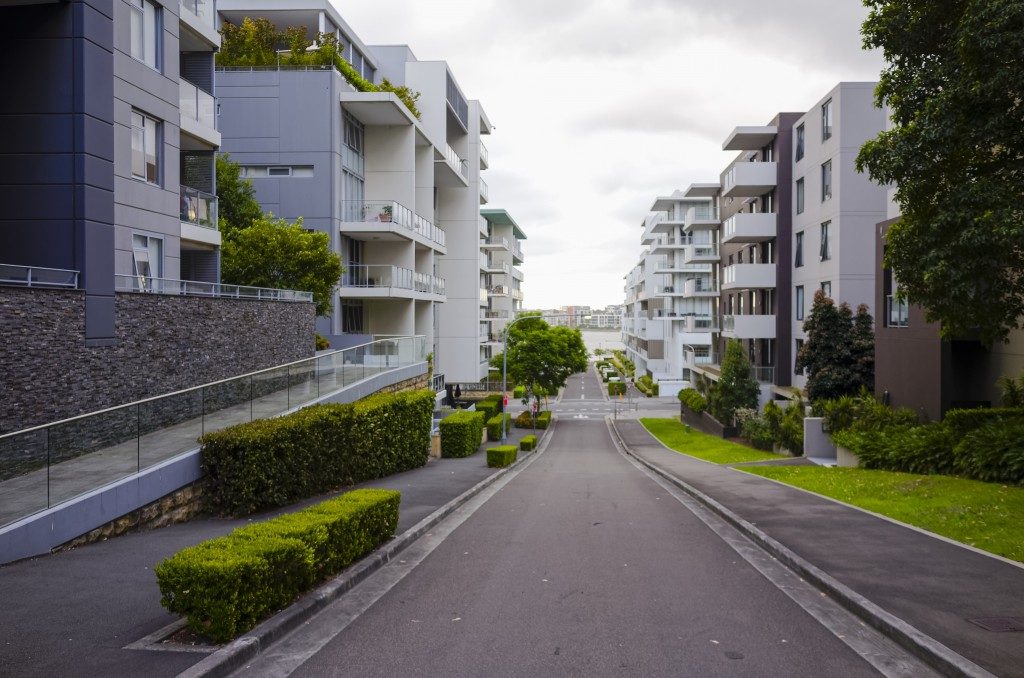- Vertical gardens are constructions that allow you to grow plants vertically.
- A hydroponic irrigation system maintains the modern vertical garden.
- You can choose from many tones, shapes, types, and sizes to add some decor to your home with a vertical garden planter.
- For a fast planter installment, you need soil, plants, a container, and a vertical stander.
- Eye-pleasing sight, easy to sustain, extra sun exposure, homemade food, and great airflow are some benefits vertical garden planters offer.
Have you ever wondered how people tend to create such beautiful flower walls or green fences?
The answer is simple: using vertical garden planters to grow the plants upwards. Their witty constructions come in many forms and sizes, and you can attach them to a wall or fence or have them as free-standing planters in your yard.
Investing in vertical garden planters benefits you and nature in general. They will allow you to grow plants anywhere and make your home healthy and more agreeable. They will also protect you from temperature fluctuations and cool the air around you.
Many people enjoy having plants in various sizes in their homes, but they usually don’t have enough space. That is where the vertical planter is handy to save space and allow you to grow your favorite veggies or flowers.
Continue reading this review to find some helpful tips!

What Is A Vertical Garden?
In general, vertical gardens are attachable items or sling panels in which you can grow different types of plants. These distinctive constructions can stand independently, or you can strap them to a wall. They come in different sizes, from small frames to wall-covering ones.
The necessity of vegetation in urbanized areas has flourished the vertical garden idea. We can see them in the exteriors of buildings and cafes, office rooftops, and glass terraces.
They are a perfect substitution for potted plants to save space and decrease maintenance.
Indoor and Outdoor Vertical Garden
Indoor gardening can include a green facade, living/green wall system, or vertical garden planters, which can be free-standing. Or you can make room for your rooftop thanks to all the amazing rooftop garden ideas and make a magical glass garden.
It’s the preferred choice for individuals looking to invest minimal effort into caring for a vertical garden.
Exterior Vertical Garden
Outdoor vertical gardens are commonly created as green walls on buildings or fences. They contain different plants, such as moss, vines, and others.
Another great thing about exterior vertical gardens is that they have direct sunlight and are eye-catching. Thus, they aim to be aesthetically pleasing and help with UV radiation, temperature changes and evapotranspiration.
What Do You Mean by Vertical Garden Planters?
Vertical garden planters can come in arches, trellis, containers, plastic pockets, vertical stands, mobile planters, or different wall attachments suitable for indoor and exterior vertical gardening. Add them to your yard, roof, balcony, room, or other space. Nowadays, there are available everywhere, and you can search for promotions and deals in every retail store.
You can choose the size, form, color and material for a reasonable price without breaking the bank.
Next, you need to select the place and space where you would place your vertical garden planter since it will enormously affect the plant’s lifespan. A great option might be a patio, a lighter part of the yard or an open window area if you plan to place it indoors.
Aside from the colors, shapes and patterns, outdoor herb planters should have good drainage. That applies to all types of planters. Selecting the right piece will help you with faster-growing results. To know the product, you must also know the manufacturer’s material. Always go for a stylish and durable material, like terracotta, metal or ceramics, and you will never go wrong!
How to Install Vertical Garden Planters?
Whether installing a vertical garden featuring small or large plants, there are some essential steps you need to take. To simplify things for you, we’ve summarized the basics:
Installing Vertical Garden Planter In Detail
We will give you some tips on how to quickly and effectively install your vertical garden:
- Select the type of planter (wall attachments, fence attachments, arches, mobile planters, free-standing planters, etc.);
- Select the position or place on which you will place or strap the planters and ensure that it will benefit your plants;
- If you are using bought containers, place them on the selected type of planter. However, if you are doing it yourself, create a frame, add a plastic sheet as a barrier, and place two layers of fabric;
- Place an irrigation system to water the plants;
- Place a fertilizer and connect the irrigation system to a water source;
- Choose your plants wisely to fit the climate and container better;
- Place the plants in the soil;
- Keep regular maintenance.

Benefits of Using Vertical Garden Planters
There are many benefits to utilizing vertical garden planters. Vertical gardens bring aesthetic pleasure and are an immediate conversation starter. In addition, saving space and enhancing air quality have a constructive impact on the environment.
Other practical benefits that vertical garden planters provide are effortless maintenance, prevention of plant illnesses, decrease in water and electricity consumption, pest control, etc.
Let’s look at each benefit in detail:
Grow More in a Small Space
Many people don’t have the luxury of a cozy little yard, never mind a big yard. So when you are spatially limited, having the option to create your unique vertical garden is an opportunity that many will jump at. You can make your balcony or terrace a vegetation escape from the urbanized stone blocks around you.
Superior Air Quality
An indoor and outdoor vertical garden will positively influence your health. They also affect the environment by reducing the carbon footprint and absorbing damaging compounds.
Grow Peppers in Undprecedented Places
The liberty that a vertical garden planter can give you is fantastic. You can now grow any plant on your wall, fence, or wooden balcony!
More Privacy and Less Noise
A vertical garden can provide a plant wall of lush vegetation and decrease the everyday noises of the fast way of life! Another great thing is that it will keep you hidden from prying eyes.
Easy to Sustain
Common gardening problems like pesky weeds, pests, and plant diseases are almost a myth regarding vertical gardening. Still, basic maintenance is needed, like watering, fertilizing, running, and harvesting. Also, using irrigation systems will help you have a faster and more effective watering time.
Better Sun Exposure
A vertical garden will give your plants better exposure to sunlight and, therefore, a better growth rate. Additional sunlight for many plants, like vines, will help them grow faster and produce better. Having greater exposure to the sun is essential for your plants to survive and thrive.
Simple Harvest
You don’t have to bend or search far with a vertical garden. Your products are at eye level; you can take them down without a hitch. Another plus is that you can spot your vegetables faster since they hang down.
Healthier Vegetables and Fruits
Knowing that you put natural ingredients in your soil and have not used pesticides will instantly make your veggies and fruits taste better and have no damaging components. Also, fruits look much prettier in vertical gardens than on the ground. It is also great that you will not have any yellowish spots on them since they will grow vertically and not touch the ground.
Conclusion
Your home is your sanctuary from the daily work stress and effects of the fast way of living. Why not make your sanctuary even more enlightening?
Adding vertical garden planters in your household will instantly enrich the decor and improve your mood. Since vertical gardening allows you to plant wherever you want, you can make your house or apartment lighter and have better airflow. It is so simple to install and takes up a small fragment of your time.
Ultimately, you have many benefits, especially if you live in an apartment surrounded by the same buildings.

FAQs
What grows well in vertical planters?
Herbs like basil, rosemary, sorrel, and lavender are excellent for vertical planters. In bushy structures, vegetables like beans, tomatoes, cucumbers, peas, and squash grow well in vertical planters.
Are vertical planters worth the investment?
For people that love growing their food, vertical players are an excellent investment. Also, water and electricity consumption are minimal, and plenty of space is saved.
How long do vertical planters last?
Vertical planters can last up to 25 years due to their composite structure. However, the plants can not last long because the rooting system fills the space. So, depending on the plants, you must change them in about six months to a year.
Is it safe to install vertical planters at home?
Installing vertical planters at home is safe, but you must take preventive measures for better security and mold-free walls and windows. Clever draining methods and watering should be a priority, and the garden should be on anti-rotting surfaces.



